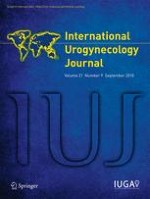01-09-2010 | Original Article
Tissue-engineered fascia from vaginal fibroblasts for patientsneeding reconstructive pelvic surgery
Published in: International Urogynecology Journal | Issue 9/2010
Login to get accessAbstract
Introduction and hypothesis
Mesh-augmented reconstructive surgery for pelvic organ prolapse (POP) does not meet clinical expectations. A tissue-engineered fascia equivalent needs to be developed.
Methods
Human vaginal fibroblasts (HVFs) from 10 patients were characterized in vitro. Eligible HVFs and a biodegradable scaffold were used to fabricate a fascia equivalent, which was then transplanted in vivo.
Results
The cultured HVFs were divided into high (n = 6) or low (n = 4) collagen I/III ratio groups. Cells of the high-ratio group exhibited significantly higher proliferation potential than those of the low-ratio group (P < 0.05). A fascia equivalent was made with HVFs of the high-ratio group. In the subsequent animal study, a well-organized neo-fascia formation containing HVFs could be traced up to 12 weeks after transplantation.
Conclusions
Our results suggest that a tissue-engineered fascia could be developed from HVFs in vitro and in vivo, which might be an effective treatment for POP in the future.





